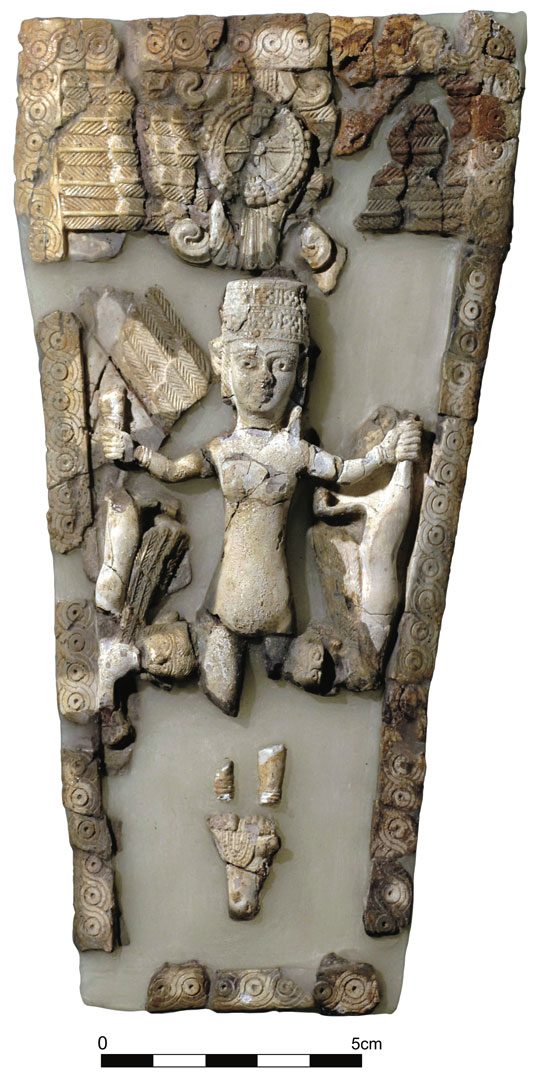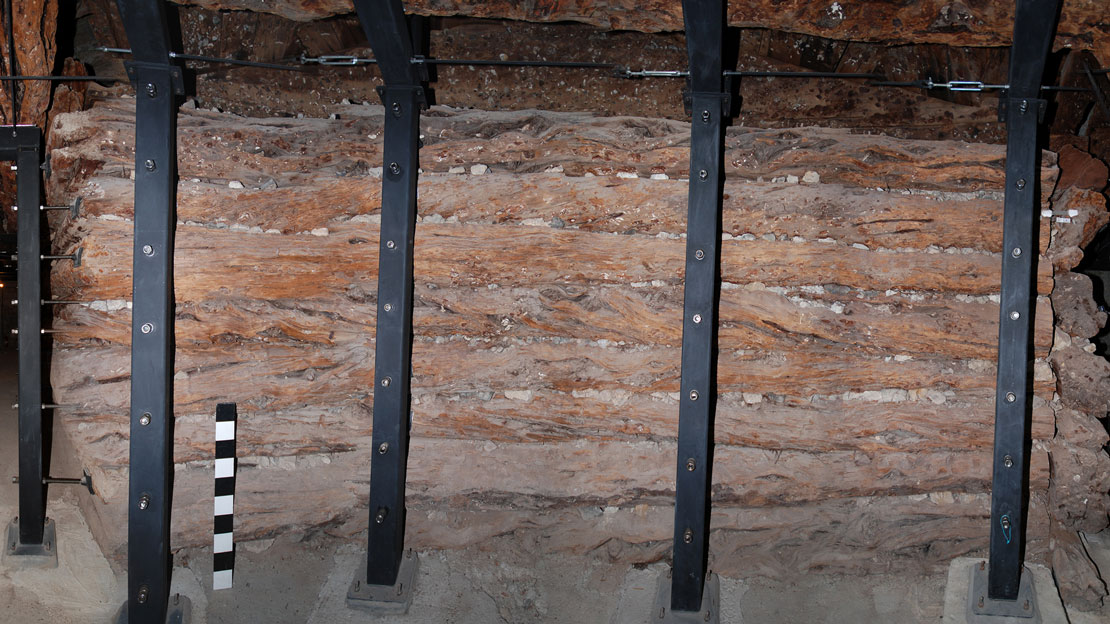Chronology

The phases of Gordion have been referred to in several different ways, all of which are collated below to facilitate comparison between old and new data. Young’s basic stratigraphic units were architectural (buildings and building phases) such as Early Phrygian or Hellenistic. The excavations conducted by Voigt, however, focused on changes in human activities and/or natural processes. Ten major chronological units were defined, each characterized by distinctive aspects of architecture, artifact types, and, in some cases, floral/faunal assemblages. Each of these has a YHSS prefix (Yassıhöyük Stratigraphic Sequence).

| YHSS Phase | Period Name | Approximate Dates | Cultural Affiliation |
|---|---|---|---|
| 0 | Modern | 1920s | Turkish |
| 1 | Medieval | 10th—15th centuries CE | Unknown/Selcuk |
| 2 | Roman | 1st century BCE—4th century CE | Roman |
| 3A | Late Hellenistic | 260(?)—100 BCE | Galatian |
| 3B | Early Hellenistic | 330—260(?) BCE | Phrygian/Greek |
| 4 | Late Phrygian | 540—330 BCE | Phrygian/Persian |
| 5 | Middle Phrygian | 800—540 BCE | Phrygian |
| 6A—B | Early Phrygian | 900—800 BCE | Phrygian |
| 7 | Early Iron Age | 1100—900 BCE | Phrygian |
| 9—8 | Late Bronze Age | 1400—1200 BCE | Hittite |
| 10 | Middle Bronze Age | 1600—1400 BCE | Hittite |
The “New Chronology” at Gordion
A fixed point in the chronology of the Central Anatolian Iron Age has long been the Early Phrygian Destruction Level at Gordion, with monumental burned buildings that contained a wealth of pottery and other artifacts. Upon first encountering the Destruction Level in the 1950s, the excavators, headed by Rodney S. Young, dated it around 700 BCE and linked it to Strabo’s account of a Kimmerian invasion of Phrygia at the end of the reign of Midas, whom Assyrian records show to have been in power from at least 717 to 709 BCE. The date found wide acceptance and became central to the chronology of other sites in central Anatolia.
Early radiocarbon results published in 1961 hinted at a date before 700 BCE, but the dates had a very broad range and came from material in use over a long period. A more compelling challenge arose from Peter Kuniholm’s dendrochronological results, which put the latest preserved ring from the structural timbers of two buildings within the Destruction Level well back in the ninth century BCE (see Table, below). Nevertheless, the unexpectedly high date seemed explainable by reuse.
Scientific information that directly conflicted with the accepted chronology came in January 2001, when Bernd Kromer of the Heidelberg Akademie der Wissenschaften completed a series of radiocarbon determinations from the Destruction Level. Five seed samples (barley, lentil, flax) recovered by Mary Voigt from her 1988-89 excavation of Terrace Building 2A were submitted by Kuniholm; each sample was taken from a different pot found in situ on the floor. The samples fit into a calibrated range extending from 821–807 BCE at the 1 sigma, or 68.2%, level of confidence, and a slightly larger range of 827–803 BCE at the 2 sigma, or 95.4 %, level of confidence. Reeds from the roof, presumably older than the seeds, have a higher but overlapping range (see Table, below). On-going work now provisionally suggests a date around the lower end of the range indicated above.
During the 2001 summer season at Gordion, Voigt, Sams and DeVries rechecked artifacts from the Destruction Level against the typological sequence obtained from tumuli that had been excavated in the Gordion region. The study demonstrated that the pottery and bronzes of the Destruction Level find their best correspondence far back in the tomb sequence, following the earliest of the excavated tumuli (Tumulus W). A few artifacts from the Destruction Level independently support the late ninth century date. A set of North Syrian ivory horse-trappings resembles horse-trappings bearing inscriptions of Hazael of Damascus, who reigned from 842 to ca. 805 BCE. A bronze griffin protome has a close counterpart in a bird protome from the burned level at Hasanlu, Period IVB, itself dated ca. 800 BCE by short-lived radiocarbon samples.
Examination of materials from post-Destruction Level deposits in 2001 and 2002 showed that the rebuilding of the site, at a much higher level and characterized by still greater monumentality, began relatively early in the Middle Phrygian period, close to the time of tumuli (Tumulus K-III and Tumulus P) that Sams dates no more than a generation after the Destruction.

A second chronological shift affects another Gordion benchmark, the Great Tumulus (Tumulus MM), which has often been taken to be that of Midas. In December 2001, Sturt Manning, Bernd Kromer, Peter Kuniholm and Maryanne Newton published a new date for the cutting of the logs of the tumulus, raising their previous determination of 718 +/-1 to 740 +4/-7 as part of their overall boosting of Anatolian Bronze and Iron Age dendrochronology by 22 +4/-7 years. They concluded that the new chronological system is the best “near-absolute time scale” until a full tree-ring sequence from the present day back to the Iron Age is obtained. In March 2003 they announced a confirmation of the revised system with a very slight modification, putting the felling of the logs at 740 +7/-3 with a strong probability of its being in the short range of 743–741 BCE. The revised date for Tumulus MM virtually rules out an identification of its occupant as Midas, who (based on Assyrian records) was still active in 709 BCE.
The raising of the old date receives support from an assemblage with bronzes and pottery within the rebuilt citadel. The bronzes in that assemblage, which are distinctly later than those in Tumulus MM, were found with Corinthian Late Geometric (ca. 730-720 BCE) and Early Protocorinthian (ca. 720–690 BCE) pottery; this fits well with the proposed change in dating. The “New Chronology”, in particular, highlights the contrast in material culture between Early Phrygian Gordion and the more modest settlements of Geometric Greece. Phrygia clearly had far more in common with the flourishing Syro-Hittite region to the southeast.
Further reading
- DeVries, K. 2005. “Greek Pottery and Gordion Chronology,” in The Archaeology of Midas and the Phrygians. Recent Work at Gordion, ed. L. Kealhofer, Philadelphia, pp. 36–55.
- Manning, S., B. Kromer, P.I. Kuniholm and M. Newton. 2001. “Anatolian Tree Rings and a New Chronology for the East Mediterranean Bronze-Iron Ages,” Science 294.5551, pp. 2532–5.
- Manning, S., B. Kromer, P.I. Kuniholm and M. Newton. 2003. “Confirmation of near-absolute dating of east Mediterranean Bronze-Iron dendrochronology,” Antiquity 77.295, Project Gallery

